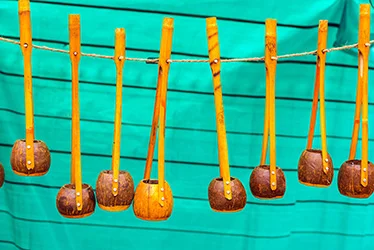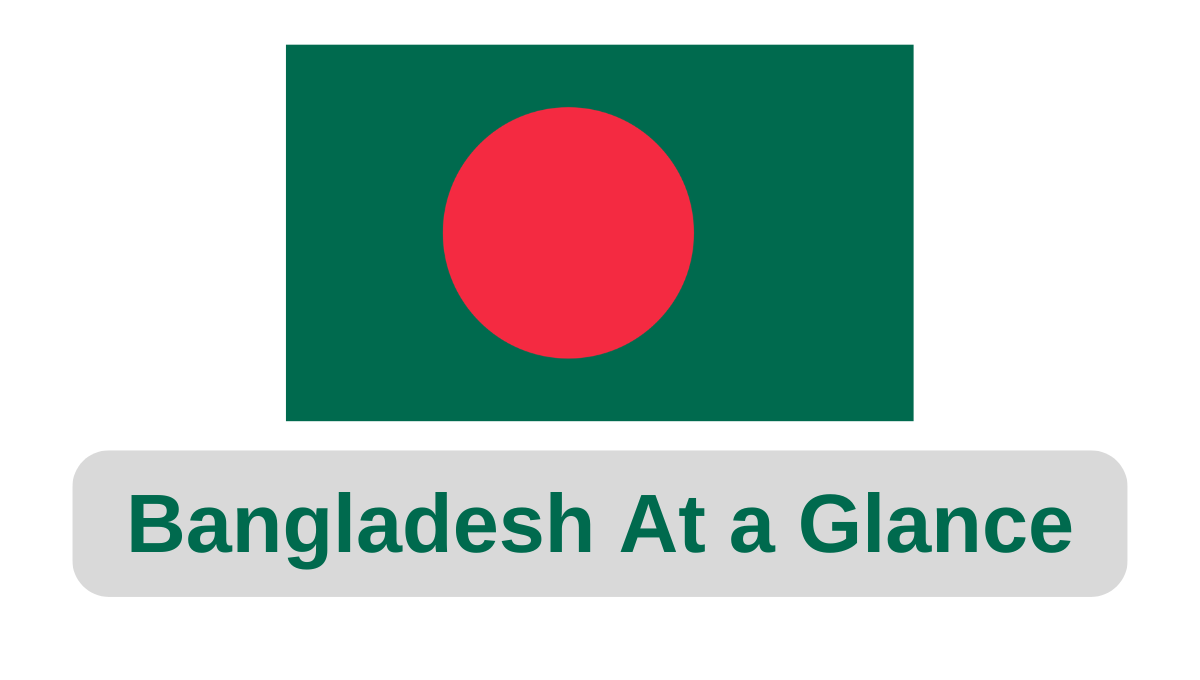Bangladesh at a Glance: Essential Facts and Insights
Bangladesh is a South Asian country located in the northern Indian subcontinent. India is to the west, north, and east of Bangladesh. Myanmar is to the southeast and the Bay of Bengal is to the south. It has a total area of 1,47,570 square kilometres and a population of over 171.2 million as of 2024. One of the most densely populated countries in the world.
People in Bangladesh speak Bangla, the official language most of the population speaks. English is also widely understood and spoken, especially in business and education. Otherwise, 40 other languages are spoken.
Bangladesh has a subtropical monsoon climate with a warm and humid summer and a cool and dry winter. The monsoon is heavy there and lasts from June to September. This post briefly covers essential facts and insights within the framework of “Bangladesh at a Glance.”
Discovering Bangladesh

Bangladesh is a land of contrasts, rich in history, diverse culture and natural beauty. From the cities to the villages, It is a unique and memorable experience for visitors. One of the most interesting parts of this nation is its history, which has been shaped by various civilizations like the Mauryas, the Palas, the Senas, and the Mughals. This is reflected in its architecture, art, and literature.
Bangladeshi Culture and Heritage
The culture of Bangladesh has been shaped by its history and geography. The country has 54 ethnic groups, and each has its traditions and customs.
One of the most important parts of Bangladeshi culture is its literature, which has produced many famous writers and poets such as Rabindranath Tagore, Kazi Nazrul Islam, Syed Mujtaba Ali, and Jibanananda Das.
Tagore was born in Calcutta (West Bengal, India) and was the first non-European to win the Nobel Prize in Literature. He’s one of the most famous writers and poets of the 20th century. His works on nature, love, and social justice have been translated into over 100 languages and have influenced many writers and thinkers.

One of the most important parts of Bangladeshi culture is its literature, which has produced many famous writers and poets such as Rabindranath Tagore, Kazi Nazrul Islam, Syed Mujtaba Ali, and Jibanananda Das.
Tagore was born in Calcutta (West Bengal, India) and was the first non-European to win the Nobel Prize in Literature. He’s one of the most famous writers and poets of the 20th century. His works on nature, love, and social justice have been translated into over 100 languages and have influenced many writers and thinkers.

Another important part of Bangladeshi culture is music and dance. It has a rich tradition of folk music and dance, which is performed during festivals and celebrations. The country is also known for its classical music, which has been influenced by Indian classical music. Bangladeshi music is characterized by the use of instruments like the ektara, dotara, bashi, and sarinda.
The natural beauty of Bangladesh
Bangladesh is full of natural beauty, rivers, clean beaches, and green forests. Shared with India, this country has the world’s largest mangrove forest, the Sundarbans. You can see a wide variety of wildlife like the Bengal tiger, Ganges river dolphin, and water’s edge crocodile, in the Sundarbans, which are UNESCO World Heritage Sites.
Cox’s Bazar Beach, the world’s longest continuous sandy sea beach 120 km in length, is another natural beauty of Bangladesh. Famous for its golden sand and blue waves, this beach is a favourite spot for both locals and tourists.

There are 907 rivers in this country, including Padma, Meghna, and Jamuna. These rivers are major transportation, irrigation, and fishing rivers and are part of the country’s geography.
Bangladesh’s Tourism
Bangladesh is still a new tourist destination, but because of its uniqueness and hospitality, it’s becoming more popular. Visitors can do various activities across the country, such as ecotourism, adventure sports, and cultural walks.

There are three UNESCO World Heritage Sites in Bangladesh. These are the Sundarbans, Bagerhat Mosque City, and the Ruins of the Buddhist Vihara at Paharpur.
Bangladeshi Cuisine
Bangladeshi cuisine is known for its variety and spices. Bhaat (rice) and fish are the staple foods in BD. Spices, herbs, and vegetables are the hallmarks of the cuisine in this region. Some of the most popular Bangladeshi dishes are Shutki Bharta, Bhuna Khichuri, Machher Jhol and Hilsa, a fish that is considered a national treasure.

Other dishes are dal, a lentil-based stew with rice, and shukto, a bitter vegetable curry of West Bengal. BD has many sweets, like roshogolla and chomchom.
Festivals in Bangladesh
Bangladesh celebrates all its cultural festivals throughout the year. Some of the main festivals are Pohela Boishakh (Bengali New Year), Eid-ul-Fitr, Eid-ul-Adha, Durga Puja, Pahela Falgun, Shab-e-Barat, and Muharram.
Bangladesh Economy at a Glance
It has grown economically in recent years, with a GDP growth rate of 6.3% in 2024 and a size of 454 billion dollars. The garment industry is the backbone of the country’s economy, which accounts for over 81% of its exports. Other sectors are agriculture, remittances from abroad, and the service sector. The country has also made progress in reducing poverty and improving social indicators like education and health.
Despite all this, it still has challenges like income inequality, corruption, and climate change. The country is prone to natural disasters like floods, cyclones, and droughts.
Bangladeshi Art
It has a long tradition of art, painting, sculpture, and handicraft. The vibrant colours and intricate designs of BD often take inspiration from nature and daily life and that’s why BD is famous for its art.

Zainul Abedin, the national artist of Bangladesh, was a pioneer artist known for his depiction of human suffering and struggle. His most famous work is the haunting “Famine Sketches” (1943), which brought international attention. The Bengal famine of World War II is considered one of the biggest human disasters of modern times.

One of the most popular deshi art is nakshi kantha, a type of embroidered quilt with intricate designs and patterns. Women make kanthas, which are traditionally used to tell stories of their lives and experiences through the art and narrative woven into the fabric.
Another form of art is jamdani, a fine muslin fabric with intricate designs and patterns. It’s recognized by UNESCO as the intangible cultural heritage of humanity.
Bangladeshi art also uses natural materials like jute, bamboo, and cane. These materials are used to make handicrafts like baskets, mats, and furniture.
History of Bangladesh
Bangladesh has a long and complex history, shaped by various civilizations and empires. It was part of the Bengal Sultanate and Mughal Empire before it became a province of British India in the 19th century.
One of the most important events in this nation’s history was the Language Movement of 1952, which was a protest against the imposition of Urdu as the only state language of Pakistan. The movement led by students and intellectuals played a big role in shaping nationalism and ultimately led to the state’s independence.
It gained independence from Pakistan in 1971, and since then it has grown.

